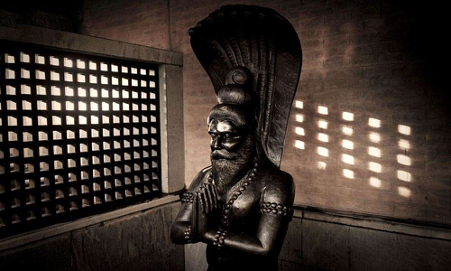
The Great Indian Sages..
Rishi Kanada(कणाद) (?BC-?BC)
Rishi Kanada is one of the most profound physicists in entire human history.
The century in which Kanada lived, as per the western scholars, is inexact just like how Mahabharat & other historical events are ill-timed.
Rishi Kanada(कणाद) (?BC-?BC)
Rishi Kanada is one of the most profound physicists in entire human history.
The century in which Kanada lived, as per the western scholars, is inexact just like how Mahabharat & other historical events are ill-timed.

In his work Vaisesika Sutra, he talks about various concepts of physics such as types of substance, their attributes, and actions, atoms, the eternality of atoms, the nature of mind, consciousness, space and time, the concept of invariance, the list is long.
Vaisesika Sutra is a treasure for both philosophers and physicists.
Some of the highlights from his work (this list is too small compared to the treasure of knowledge in his actual work):
- He talks about a system that includes space, time, matter, as well as observers.
Some of the highlights from his work (this list is too small compared to the treasure of knowledge in his actual work):
- He talks about a system that includes space, time, matter, as well as observers.
- He talks about aṇu, the most fundamental particle.
- He defines four types of atoms, two with mass (similar to proton & electron) & two with little mass (like the modern neutrino & photon)
- He talks about the concept of invariance.
- He defines four types of atoms, two with mass (similar to proton & electron) & two with little mass (like the modern neutrino & photon)
- He talks about the concept of invariance.
- Rishi kanada anticipated the laws of motion, yes, you read that right! As follows:
>>> In the absence of conjunction, gravity [causes objects to] fall
>>>In the absence of a force, there is no upward motion, sideward motion, or motion in general
>>> In the absence of conjunction, gravity [causes objects to] fall
>>>In the absence of a force, there is no upward motion, sideward motion, or motion in general
>>>The initial pressure leads to the arrow’s motion; from that motion is momentum, from which is the motion that follows and the next and so on similarly
>>>Action(karya) is opposed by reaction(karman)
The above principles are effectively equivalent to Newton’s laws of motions
>>>Action(karya) is opposed by reaction(karman)
The above principles are effectively equivalent to Newton’s laws of motions
For a detailed and technical understanding of Rishi Kanada's work in Physics, please read this brilliant article by @subhash_kak sir
medium.com/@subhashkak/ka…
medium.com/@subhashkak/ka…
Rishi Kanada is not just a scientist but an enlightened being
Interestingly, all ancient Indian scientists had always considered science & spirituality as two sides of the same coin & thus their work binds science & philosophy so beautifully & accurately.
Sheer brilliance!🙏
Interestingly, all ancient Indian scientists had always considered science & spirituality as two sides of the same coin & thus their work binds science & philosophy so beautifully & accurately.
Sheer brilliance!🙏
• • •
Missing some Tweet in this thread? You can try to
force a refresh








